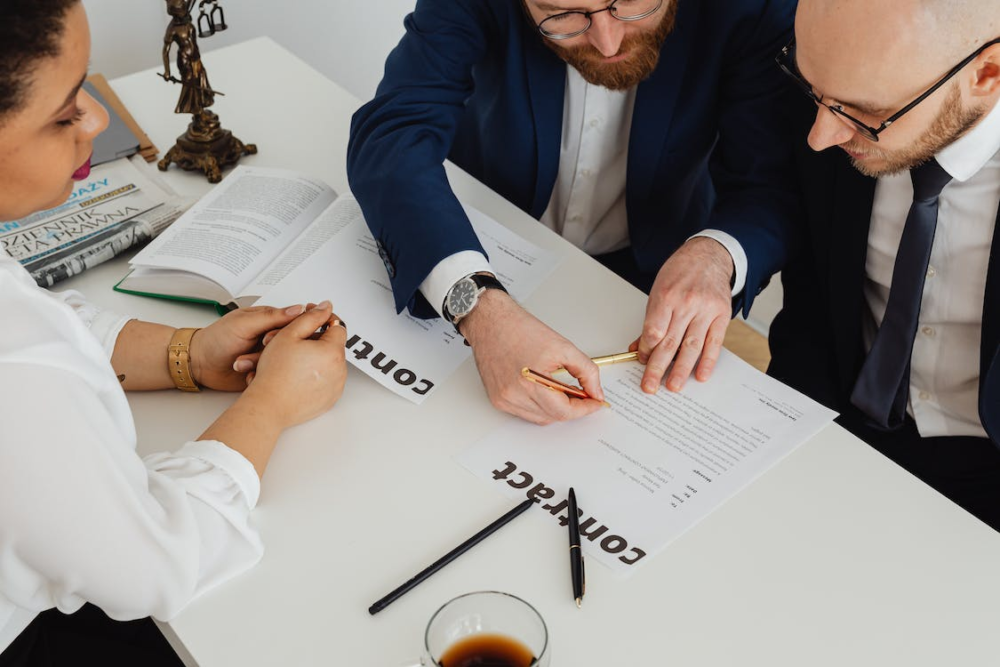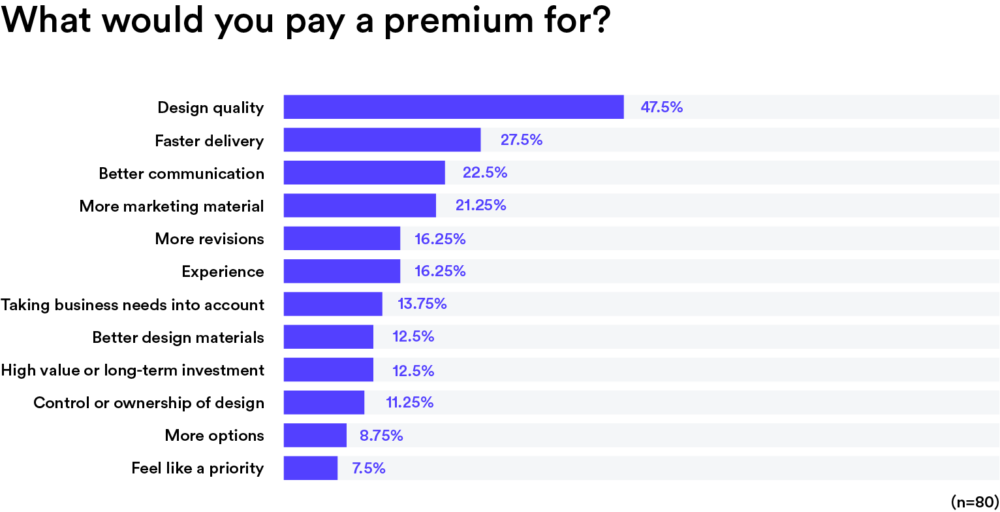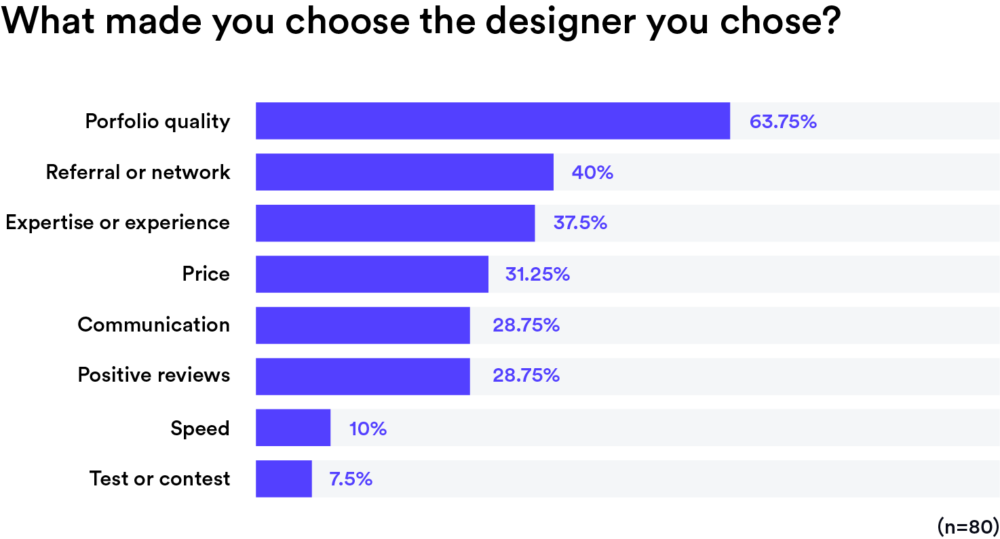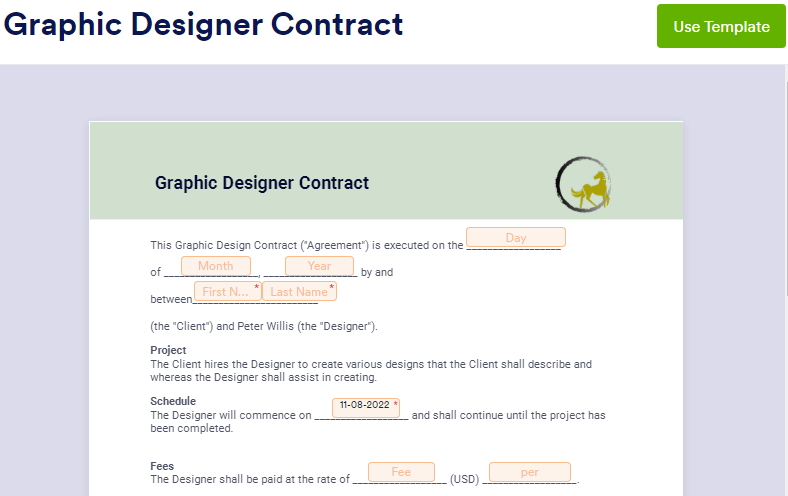Note: This article contains legal advice. We recommend you consult a lawyer before making legal decisions in your business.
Having a graphic design contract in place may be the last thing on your mind when you’re starting out as a freelancer. In all the excitement of landing your first big clients, it can be easy to forget how important it is to protect yourself, and your business.
A graphic design contract does just that, and helps to forge better relationships between you and your clients as a result. Read on to find out exactly what features should be included in a graphic design contract, and just how one can protect you, and your clients, in the event that something goes wrong.
What is a Graphic Design Contract?
A graphic design contract is a legally binding document that lays out the terms of a working partnership between a freelance designer and their client.
Unlike agency or in-house graphic designers, freelancers don’t have the benefit of company HR or legal teams to look out for their interests. It is therefore pertinent for freelance graphic designers to protect themselves, and their work, through the use of a graphic design contract.
Money Note: If an extra $1K–$5K/month would change your 2026 goals (debt, savings, travel, freedom), you’ll want to catch this: free live workshop from a freelancer who’s earned $4M+ online. No fluff. No gimmicks. A real roadmap. 👉 Watch the training or save your seat here »
The graphic design contract will put in writing what work is expected of the designer, the timescale in which it is to be completed, how many revisions it is acceptable for the client to request, and any agreements around ownership and IP, among other features. In this regard, the terms of employment are much easier to refer back to than with a verbal contract.
A graphic design contract will usually be drawn up by the freelance graphic designer, and should be agreed upon and signed by both the designer and the client prior to work commencing on a project.
What Every Graphic Design Contract Must Include
There are some common features and clauses that should be present in any freelance graphic design contract, regardless of who is signing it.
Work
The first feature of a freelance graphic design contract will often be an overview of the project that is to be completed.
This will often be based largely upon any project proposal that was submitted to the client, and will include details about what services you will provide as the freelance graphic designer, and what the client will be provided with upon completion of the project.
This section of the graphic design contract ensures that you and the client are on the same page regarding expectations of the work, and your responsibilities as the designer.
Deliverables
The deliverables section of a graphic design contract is where the exact details of what the client will be provided with should be listed. Everything that you’ll provide for the client as part of the project should be listed here, in as much detail as possible.
This includes listing details such as file types or design variations. Even the method of delivery can be stated here, for example, will the designs be sent via email, or delivered on a flash drive?
It can also be a good idea to include a clause which covers any additional design assets that the client may request in addition to the original scope of the project.
Revisions
Giving your clients the ability to request revisions to a project is a good idea, as it demonstrates flexibility, and a desire to produce work that all parties are satisfied with. However, it’s important to not become a victim of scope creep.
This is when clients begin to request additional work under the guise of revisions, that wasn’t included under the agreed upon scope of work. In order to help prevent this, you can detail exactly how many revisions you’ll accept from the client under the original scope of work.
Alongside this, make clear how much you will charge as extra for additional revisions that do not fall under this mandate. For example, some freelancers may include two or three revisions in their initial rate, with an extra premium required for any revisions beyond that. 16% of businesses state that they would pay a premium for more revisions on their graphic design projects.
Payment Terms
Next is the section of the contract which can make many freelancers feel uncomfortable; the terms of payment. Of course, there shouldn’t be anything embarrassing about asking for fair payment for your services, so don’t rush through this section out of embarrassment without giving it the proper time and attention it deserves.
Details about when payment is expected, and what form it can be made in, should be included here. Typically, payment will be made before the client is sent the final product.
If you require a deposit, details about when and how it should be made should also be included here. Having a deposit in place is a good way to safeguard you against not being paid at all, and helps you to see how invested in you and your work the client is.
If you are to be paid in installments, then a detailed payment schedule can also be included. You could also include details of any late fees you may wish to charge for missed payments according to this schedule.
Time
This section of the contract gives you a place to include your working hours, and lay out any deadlines that have been agreed upon. Not only should you include the deadline for the entire project, but also for each phase of the project along the way.
These details will not only give your client the peace of mind of knowing that their work will be completed on time, but will also make it easier for you to structure your time, and remain organized and motivated.
By including your working hours here, you should hopefully reduce the instances in which a client will contact you outside of your office hours.
Copyright Ownership & Intellectual Property
This section of the graphic design contract will set out what rights the client, and you as the graphic designer, will have over the completed project.

As a freelancer, it’s useful to be able to show off past projects you’ve worked on when pitching to new clients. 63% of clients state that the quality of a graphic designer’s portfolio is what got them the commission. It’s therefore a good idea to get the client’s permission to add their project to your portfolio in writing.
There are four commonplace categories of intellectual property (IP) ownership, and any work you produce for a client will likely fall under one of these:
- License for Limited Usage
A license for limited usage can be used to limit where and when a client can use the work you’ve produced. In some instances, this can allow you to supply the same deliverables to multiple clients. It is commonly used for work which is relatively generic, such as editorial illustrations. - Exclusive License
An exclusive license is similar to a license for limited usage, but in this case the deliverables provided are for the exclusive use of the original client. This license is commonly used for materials which are specific to a particular client, such as ad campaigns. - Assignment of Rights
An assignment of rights involves transferring sole ownership of the project over to the client once it is completed. This license is commonly used for deliverables which will be used for an extended period of time and involve a unique corporate identity, such as logo or mascot designs. - Work-Made-For-Hire
This is a rarely used license type which means that the client is automatically seen as the sole copyright owner and creator of any deliverables provided by the freelancer. Work for hire is most commonly used if a freelancer is working on-site for a client and making use of their equipment.
Conflict of Interest
A conflict of interest clause can be included in a graphic design contract to give the client peace of mind. It will establish that the freelance graphic designer will not take on any other clients or projects that would create a potential conflict of interest with their existing customers, and be detrimental to their business interests.
Termination Clauses
As a freelancer, you’ll understand the importance of planning for the worst case scenario. Sometimes work goes uncompleted, either due to unforeseen circumstances, or because of a client canceling the project.

It’s therefore important that you include clauses in your contract to protect yourself in case this happens. A termination clause will specify what happens if either you or your client need to cancel the project.
A termination clause should also detail who owns the copyright over any work which is already complete at the time of cancellation, and whether the client will incur any fees by canceling a project that is in progress.
4 Graphic design contract templates to get you started
If the thought of creating a graphic design contract for yourself is causing you some stress, don’t worry. There are many freelance contract templates available online which can be customized to fit your own personal needs, helping you to protect yourself as a freelancer.
1. PandaDoc Freelance Contract Template
The PandaDoc Freelance Contract template is a great example of a freelance agreement that will help protect you in your freelance endeavors. It contains all the key features we covered above that you should be looking for in a graphic design contract, alongside additional clauses around limitation of liability, inspection and acceptance, and insurance.
Contracts are easily customized, with a library of pre-approved clause choices enabling you to generate contracts in a matter of minutes that will serve you for a lifetime. PandaDoc’s CRM integrations make it easy to pull customer data into your documents, speeding the process up even further.
Using PandaDoc, you can easily collaborate on contracts with other parties, with comment and chat features allowing you to easily flag up areas of concern, helping you to generate documents which satisfy everybody.
PandaDoc offers a free 14-day trial, with plans starting at $19 USD per user per month.
2. Simply-Docs Freelance Graphic Designer’s Agreement
The Simply-Docs Freelance Graphic Designer’s Agreement has been designed specifically with freelance graphic designers in mind. It is fully IR35 compliant, and ensures that the freelancer is always treated as a self-employed contractor, and not as a de-facto employee of their client.
Standard clauses are included which cover fees, termination, and intellectual property, with other less common clauses covering the self-employment status of the freelancer, law and jurisdiction, and alternative dispute resolution.
Simply-Docs is a UK based company with access to all the documents in a specific folder for £35 + VAT per year, (around $40 USD). Folders include ‘Employment Documents’, ‘Corporate Documents’, and ‘Business Documents’, where the Freelance Graphic Designer’s Agreement can be found.
3. Jotform Graphic Designer Contract
The Jotform Graphic Designer Contract can be filled out and signed on any device, making it perfect for freelance graphic designers who may be working from home, or on the move. The contract design can be personalized, then easily shared with clients through a link.
Using the drag and drop contract builder, visual design changes can be made, terms and conditions can be updated, and your own personal logo can be added.
Jotform offers a free starter plan which allows you to create 5 forms and make 100 submissions per month. Paid plans start at $34 per month (billed annually), for 25 forms and 1,000 submissions per month.
4. Millo Freelance Contract Template
Here’s a freelance contract template drafted by web designer and developer Jill Anderson for use by Millo readers. While it doesn’t come with some of the fancy features offered by some of the contract generation platforms listed above, it’s an effective contract nonetheless.
Plus it’s free to use, making it the perfect choice for freelancers in a range of creative industries, who are just starting out on their freelance journey.
5 Reasons why you should always use a graphic design contract
In an ideal world, every project you accept as a freelancer would run smoothly. Unfortunately, we don’t live in an ideal world, and projects can sometimes get messy. Freelance graphic design contracts are used to protect your interests, and those of your clients, in these instances.
Rather than waiting for the worst to happen, it’s a good idea to be proactive and start using the practice of contract generation for every project. Here are just a few of the benefits to using a graphic design contract as a freelancer.
1. Ensure You’re Paid Correctly
Some clients may be reluctant to cough up the cash you’ve earned through your hard work. In the unfortunate event that this does happen, having a graphic design contract signed by your client can provide you with legal recourse.
Having clauses which set out the exact deliverables you’ll provide and the scope of the project will help to protect you against clients who may try to pay only part of your fee, claiming that the project hasn’t been completed as agreed upon.
Detailing what constitutes an acceptable revision, and how much you’ll charge for additional revisions, will help to protect you against clients who try to obtain additional materials under the guise of revisions.
2. Build Trust
As a creative, not only does a freelance contract protect your own interests, but it also lays out the ownership rights of the clients you’re working with. Alongside this, clients are also presented with a timeline by which payments should be made, and when they can expect deliverables to be turned over.
This means that having a graphic design contract in place as a freelancer helps to build trust between you and your clients. It shows that you’re taking your business seriously, and reassures clients that they can expect their projects to be completed in a timely manner, and to a high standard.
15% of those working with freelance designers said that not being able to trust the designer was the worst part of the experience. A graphic design contract can help to mitigate this, securing the trust of your clients, and hopefully landing you more projects in the future.
3. Set a Realistic Timescale
Using a graphic design contract helps to keep both parties apprised of the schedule that you’ll be working to. This helps you structure your time, and should hopefully help reduce the chances of clients frantically chasing you for updates every couple of days.
It can also be helpful to set an end date for your services to your clients. This will help protect you in the event that clients start chasing you up for revisions months after you’ve submitted your final versions of the deliverables.
4. Prevent Scope Creep
Scope creep is a common problem for many freelancers, with clients sneakily trying to request more work than was originally agreed upon, without renegotiating your rate.
You may wish to deliver some additional work outside the original scope as a good-will gesture, if it’s not going to take too much time or effort to complete. This can help bolster your reputation as a freelancer, and could lead to repeat work in the future. However, some clients, if given an inch, will take a mile.
A graphic design contract helps protect you against the risk of projects constantly growing in scope. By detailing the original agreement about what work is to be completed, and what deliverables will be provided as part of the finished project, you can protect yourself against clients who want to take advantage of your good nature.
5. Deal With Termination
Although project termination will be a last resort for many freelancers, unfortunately there may be instances where you have no choice but to cancel a project before completion. A termination clause helps protect you in the event that circumstances outside your control force you to reduce your workload.
It will also protect you in the event that a client decides to part ways with you before a project is complete. Clients may sometimes wish to go in a different direction with a project, potentially with a different graphic designer. A graphic design contract will help ensure that you get paid fairly for the work you’ve already produced in the event that this happens.
Draw Up Your Graphic Design Contract Now
Using a graphic design contract is the best way to protect your interests as a freelancer, and the interests of your clients.
It will help to define the terms of your partnership, and help provide a schedule that both parties can stick to, when it comes to the work itself, and getting paid for it. A graphic design contract should help to eliminate any confusion surrounding ownership and intellectual property rights, as well as what will happen in the case of termination.
Having a graphic design contract in place will give you peace of mind, so you can stop worrying about the terms of your employment, and focus on creating some truly impactful designs instead.
Keep the conversation going...
Over 10,000 of us are having daily conversations over in our free Facebook group and we'd love to see you there. Join us!






